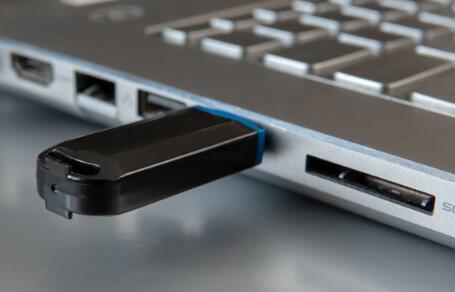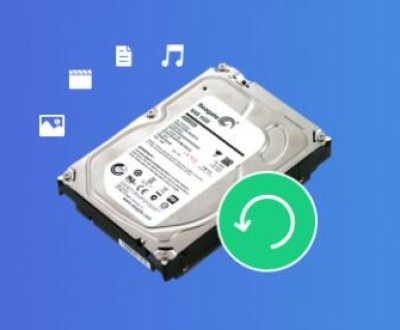Before diving into recovery methods, it’s essential to grasp the underlying reasons for data loss on USB sticks. Common causes include:
Accidental Deletion: Files may be deleted unintentionally, often through simple user error.
File System Corruption: Improper ejection or physical damage can lead to file system corruption, rendering files inaccessible.
Malware Attacks: USB sticks can be infected by malware, leading to data loss or file corruption.
Formatting Errors: Accidentally formatting a USB drive can wipe out all stored files, creating a situation where recovery is needed.
Understanding these factors can help you take preventive measures in the future.

Initial Recovery Steps
If you find yourself facing data loss on your USB stick, there are several initial steps you can take before resorting to specialized software:
1. Check Other Devices
Sometimes, the issue may not lie with the USB stick itself but with the device you are using. Try connecting the USB stick to another computer or laptop to see if the files are visible there.
2. Use File Explorer
For Windows users, the built-in File Explorer can help you check if files are hidden. Open File Explorer, navigate to your USB stick, and adjust the settings to show hidden files. This can sometimes reveal files that appear missing.
3. Look for Temporary Files
Sometimes, applications create temporary files that may serve as a backup. Check the folder where the file was last stored or look for temporary files in the system’s Temp folder.
Leveraging Data Recovery Software
If initial recovery steps do not yield results, data recovery software is often the ultimate solution. Here are some top-rated tools to consider:
1. Panda Assistant
With an intuitive interface, Panda Assistant makes the recovery process accessible to everyone, regardless of technical expertise. The software employs advanced algorithms to scan storage devices, identifying recoverable files and presenting them in an organized manner. Users can preview files before recovery, ensuring that they restore only what’s necessary.
Panda Assistant supports a wide array of file formats, from documents and photos to videos and music, making it a versatile solution for all your recovery needs. Additionally, the software prioritizes user privacy and data security, so you can recover your files with peace of mind.
What truly sets Panda Assistant apart is its commitment to user support. Comprehensive guides and responsive customer service are readily available, ensuring that you never feel alone in your data recovery journey. Trust Panda Assistant to be your reliable partner in reclaiming lost data and restoring order to your digital life.
2. EaseUS Data Recovery Wizard
EaseUS Data Recovery Wizard is known for its comprehensive recovery capabilities. It can recover various file types, including documents, photos, and videos. The software provides a simple step-by-step guide, making the recovery process straightforward, even for novices.
3. Disk Drill
Disk Drill offers powerful recovery features along with a sleek interface. It supports a wide range of file systems and can recover data from formatted USB drives. Additionally, Disk Drill provides disk health monitoring tools, helping users manage their storage devices effectively.
Using Command Prompt for Recovery
For tech-savvy users, the Windows Command Prompt can be a valuable tool for recovering lost files. Here’s a simple method to use Command Prompt for this purpose:
Open Command Prompt: Type “cmd” in the Windows search bar and run it as an administrator.
Access the USB Drive: Type the letter assigned to your USB drive (e.g., E:) and hit Enter.
Run the Recovery Command: Type attrib -h -r -s /s /d *.* and press Enter. This command attempts to recover hidden, read-only, and system files.
Professional Data Recovery Services
If software solutions do not resolve the issue, professional data recovery services can be a viable option, especially for physically damaged USB sticks or severe data loss situations. These services employ advanced techniques and specialized equipment to recover data that standard software cannot access. However, be prepared for potentially high costs, as these services can be expensive.
Preventing Future Data Loss
While recovery methods can be effective, preventing data loss in the first place is always preferable. Here are some proactive measures:
1. Regular Backups
Implement a regular backup routine for important files stored on your USB stick. Use cloud storage solutions or external hard drives to create copies of essential data.
2. Safely Eject USB Drives
Always use the “Safely Remove Hardware” option before physically disconnecting your USB stick. This practice helps prevent file system corruption.
3. Antivirus Protection
Keep your devices protected with reliable antivirus software. Regularly scanning your USB stick can help identify and eliminate potential threats before they cause data loss.
Retrieving files from a USB stick can be a straightforward process if approached methodically. Understanding the reasons behind data loss, utilizing effective recovery tools, and taking preventive measures can empower users to manage their data confidently. Whether through initial recovery steps, specialized software, or professional services, the chance of recovering lost files remains high. Embrace these strategies, and safeguard your data to ensure that valuable files are always within reach, even when the unexpected occurs. With the right knowledge and tools, you can navigate the challenges of data loss and emerge with your important files restored.
About us and this blog
Panda Assistant is built on the latest data recovery algorithms, ensuring that no file is too damaged, too lost, or too corrupted to be recovered.
Request a free quote
We believe that data recovery shouldn’t be a daunting task. That’s why we’ve designed Panda Assistant to be as easy to use as it is powerful. With a few clicks, you can initiate a scan, preview recoverable files, and restore your data all within a matter of minutes.
Subscribe to our newsletter!
More from our blog
See all postsRecent Posts
- How to save tiktok videos on computer 2025-04-30
- How to watch gopro videos on computer 2025-04-30
- How to save video from blink video doorbell to computer? 2025-04-30

 Try lt Free
Try lt Free Recovery success rate of up to
Recovery success rate of up to









